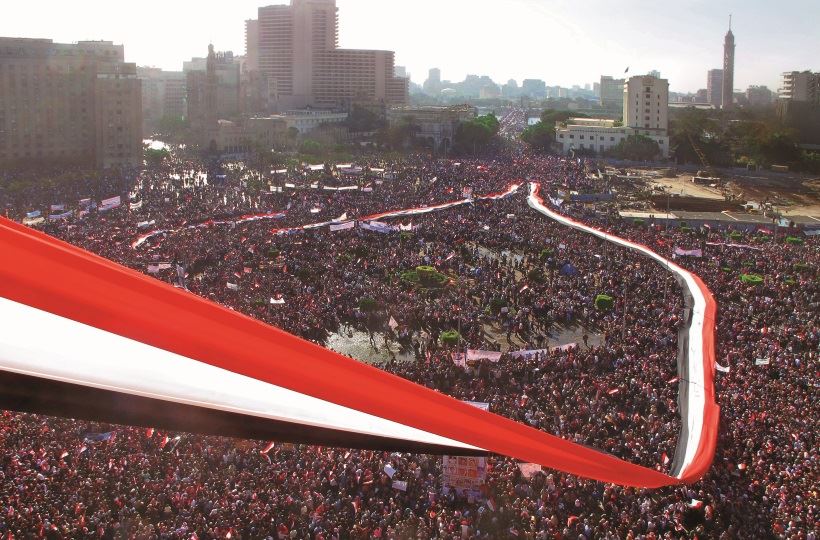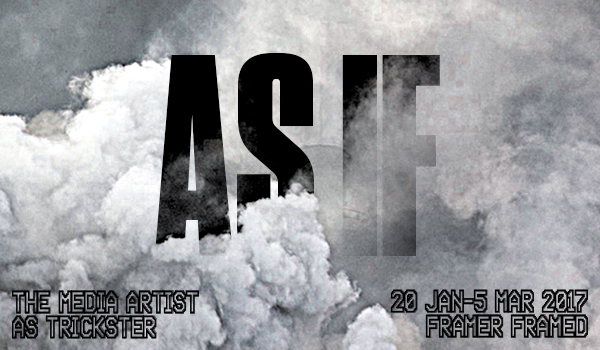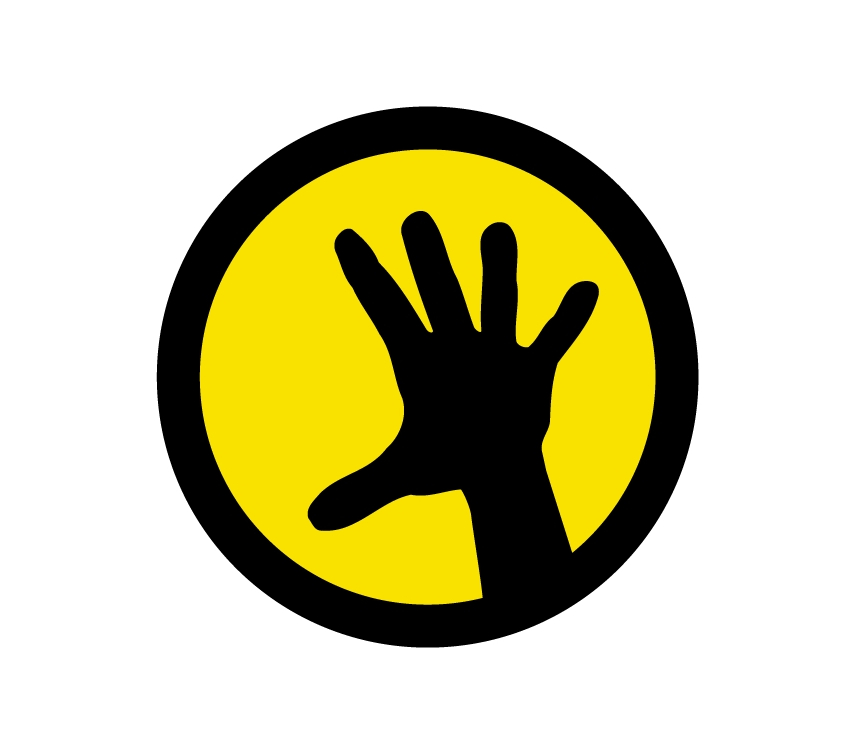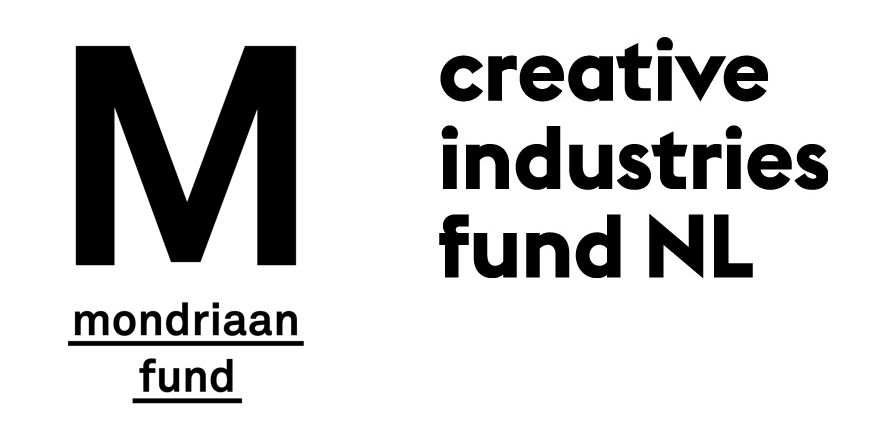Tactical Media Connections public program, Amsterdam January 20 – 22, 2017.
As part of the Tactical Media Connections public research trajectory tracing the legacies of Tactical Media and its connections to the present, a series of public events take place in Amsterdam between January 20 and 22, 2017. The public program includes an exhibition at Framer Framed in the Tolhuistuin cultural centre, opening on Friday January 20; a public debate at Eye Filmmuseum on Saturday January 21, and a one day conference (‘The Society of Post-Control’) again at the Tolhuistuin on Sunday January 22.

HeHe, La Révolte de Tremblay en France, 2017
Please find below a brief program overview, followed by a detailed description of the different parts of the public program.
Enquiries can be directed at: postcontrol@xs4all.nl
Program Overview:
As If
The Media Artist as Trickster
Exhibition at Framer Framed, Tolhuistuin, Amsterdam,
20 January – 5 March 2017
Opening: Friday, January 20, 2017, 17.00
Curated by Annet Dekker and David Garcia, in collaboration with Ian Alan Paul
The exhibition As If: The Media Artist as Trickster focuses on politically inspired media art that uses deception in all its forms. It shows the artist as a trickster, as a ‘dark jester’, using a variety of hoaxes, hacks and ruses to reveal the hidden workings of power structures and the possibility of alternative futures. At the heart of As If is the desire to address one of today’s most urgent political issues: a radical shift in the boundary between fiction and reality in public discourse, in a world increasingly governed by ‘post-truth’ politics.
Artists: Morehshin Allahyari, Arabian Street Artists, Paolo Cirio, Coco Fusco, Paul Garrin, Julian Oliver / Danja Vasiliev, Ian Alan Paul, Superflux, The Yes Men, UBERMORGEN, Wachter & Jud, Robert Ochshorn
http://framerframed.nl/en/exposities/expositie-as-if-the-media-artist-as-trickster
Vox Populi and The Syrian Archive
Documenting revolution and conflict in the digital age
Public Debate
Eye Film Museum
Saturday, January 21, 12.00 – 17.00
The program at Eye explores the complicated relationship between the activist moment, increasingly mediated by the participants in these events themselves and increasingly in near real-time, and the static character of the archive and its implicit ‘suspension of time’. We center for this on two ambitious projects under development: Vox Populi – Archiving a Revolution in the Digital Age, of artist Lara Baladi, and The Syrian Archive, an initiative launched by a collective of human rights activists dedicated to preserving open source documentation relating to human rights violations and other crimes committed by all sides during the conflict in Syria.
Speakers: Lara Baladi (Vox Populi), Hadi Al Khatib & Jeff Deutch (The Syrian Archive), Robert Ochshorn, and guests. Moderated by Annet Dekker & Eric Kluitenberg
The Society of Post-Control
Conference
Tolhuistuin, Amsterdam
Sunday January 22, 12.00 – 18.00
Drawing on Michael Seemann’s concept of Digital Tailspin (“Kontrollverlust”) this expanded conversation will explore the idea that a situation has emerged where the overwhelming complexity of technological and socio-economic systems is giving rise to an ever increasing number of unpredictable and uncontrollable events. How do civic rights advocates, activists, image makers and artists respond to this evolving context of Post-Control? Are there new opportunities for progressive emancipatory politics that are able to surf the chaos as effectively as the insurgent populists of the new right (alt.right and beyond)? How to respond to ‘Post-Control’ online and offline?
Speakers: Michael Seemann, Geert Lovink, Marc Tuters, Kim de Groot, David Garcia, Ingrid Eel, Ian Alan Paul, Bernardo Gutiérrez , Steve Kurtz, and guests. Moderated by Eric Kluitenberg.
Context:
This program is part of Tactical Media Connections, a public research trajectory initiated in 2014 by Eric Kluitenberg and David Garcia tracing the legacies of Tactical Media and its connections to the present.
www.tacticalmediafiles.net/articles/3646
After Amsterdam the exhibition and associated events public events will travel to FACT, the Foundation for Art and Creative Technologies in Liverpool (2 March – 31 May 2017) and HeK (House of Electronic Arts), Basel (21 March – 21 May 2017), with a change of exhibition title to How Much of this is Fiction.
The programs in detail:
As If
The Media Artist as Trickster
Exhibition at Framer Framed, Tolhuistuin, Amsterdam,
20 January – 5 March 2017
Opening: Friday, January 20, 2017, 17.00
Curated by Annet Dekker and David Garcia, in collaboration with Ian Alan Paul
The exhibition As If: The Media Artist as Trickster focuses on politically inspired media art that uses deception in all its forms. It shows the artist as a trickster, as a ‘dark jester’, using a variety of hoaxes, hacks and ruses to reveal the hidden workings of power structures and the possibility of alternative futures. At the heart of As If is the desire to address one of today’s most urgent political issues: a radical shift in the boundary between fiction and reality in public discourse, in a world increasingly governed by ‘post-truth’ politics.
As well as acting as a timely reflection on the nature of truth in a time filled with fake news, misinformation, and tactical propaganda, the show also serves a historical purpose. Many of the high-speed media interventions showcased in the show are, to a degree, legacies of ‘Tactical Media’; a cultural and political movement that flourished briefly in the late 90s. Tactical Media was the first to combine the power of art, the tricks of the PR and advertising world, and an experimental approach to digital media, to mount hit-and run interventions in the media sphere.
As If will show how the legacies of this DIY media movement remain all around us. Whether it be the social media meme tactics of alt-right or the live streaming of police shootings to social and mainstream media platforms around the world; whether it be Trump’s midnight tweets or the exposure of the totality of the surveillance state through Snowden’s actions and information unveiled by Wikileaks: it is clear that the critical role of “do it yourself” media politics is as relevant today as ever.
Featuring works by twelve artists/artist collectives – all united in their underlying purpose of engaging with urgent social and political events – the show includes exciting new commissioned work by Morehshin Allahyari (IR).
Artists
Morehshin Allahyari, Arabian Street Artists, Paolo Cirio, Coco Fusco, Paul Garrin, Julian Oliver / Danja Vasiliev, Ian Alan Paul, Superflux, The Yes Men, UBERMORGEN, Wachter & Jud, Robert Ochshorn
Exhibition design
The exhibition is organised into two principal areas created in close collaboration with the exhibition designer Ruben Pater. Zone 1: The Newsroom and Zone 2: Guantanamo Bay Museum of Art and History.
The Newsroom looks into hacks and fabricated ‘news fictions’ where deception or provocation has interfered with the media landscape, and opened up for discussion and debate. Showcasing a number of interconnected works, this zone demonstrates how these tactics are grounded in a long history of politicised hoaxes and hacks eventually morphing into contemporary, web-based activism.
For the second part of the exhibition, the curators invited artist and chief-curator Ian Alan Paul of the Guantanamo Bay Museum of Art and History (GBmah) to co-curate and present a series of interconnected installations revealing the way in which the trickster ethos is used to interrogate a number of urgent related themes and issues. Works range from subversive acts of resistance by Arabian Street Artists and UBERMORGEN, to digital acts of cultural reclamation from Morehshin Allahyari, and the latest satirical campaign of The Yes Men.
Public Research
As If is an example of “public research”, presented in various aspects of the exhibition. The role and risks of hoaxes will be explored, highlighting the urgent need to develop a more “populist language” for progressive politics. The extensive public program will consist of talks, live performances, exhibition tours, and film screenings, to relate the exhibition to the contemporary context.
As If: The Media Artist as Trickster has been developed in partnership with FACT (Foundation for Art and Creative Technology) Liverpool (UK) and HeK (House of Electronic Arts), Basel (CH). Iterations of the exhibition and its accompanying programmes will take place at these venues between 2 March – 31 May 2017, and 21 March – 21 May 2017, respectively, with a change of exhibition title to How Much of this is Fiction.
Presented with the support of Ministry of Education, Culture and Science, Tolhuistuin, Creative Industries Fund NL, and Video Data Bank.
Vox Populi and The Syrian Archive
Documenting revolution and conflict in the digital age
Public Debate
Eye Film Museum
Saturday, January 21, 12.00 – 17.00

Friday of Victory, Tahrir Square, Cairo. Photo by Lara Baladi, 2011.
The program at Eye explores the complicated relationship between the activist moment, increasingly mediated by the participants in these events themselves and increasingly in near real-time, and the static character of the archive and its implicit ‘suspension of time’. We center for this on two ambitious projects under development:
Vox Populi – Archiving a Revolution in the Digital Age, of Egyptian-Lebanese artist Lara Baladi, which draws on the vast materials produced during the original uprising in Egypt against the military regime of Hosni Mubarak and their aftermath, collected by a group of artists, writers, theatre makers who would subsequently go on to found the Mosireen independent media centre in Cairo.
http://tahrirarchives.com
The Syrian Archive, an initiative launched by a collective of human rights activists dedicated to preserving open source documentation relating to human rights violations and other crimes committed by all sides during the conflict in Syria.
https://syrianarchive.org
Next to the complicated politics and ethics of these online archiving initiatives we want to question what the role of the artist is in such processes – a kind of stage designer? a choreographer? a facilitator? Or perhaps a creator of imaginative ‘interfaces’ as in the work of the American artist Robert Ochshorn, whose stunning interfaces for digital rich media collections far transcend the realm of ‘design’ into a new kind of art form. Ochshorn will also present his remarkable work during the event.
This program is part of Tactical Media Connections, a public research trajectory tracing the legacies of Tactical Media and its connections to the present.
www.tacticalmediafiles.net/articles/3646
Speakers:
Lara Baladi
http://arts.mit.edu/artists/lara-baladi
http://tahrirarchives.com/read-me
Hadi Al Khatib
https://cihr.eu/hadi-al-khatib/
Jeff Deutch
https://cihr.eu/jeff-deutch
Robert Ochshorn
http://teleputer.org
Charles Jeurgens
http://www.uva.nl/over-de-uva/organisatie/medewerkers/item/k.j.p.f.m.jeurgens.html?f=charles+jeurgens
We ask a number of well-informed local respondents to react to the presentations to create a lively conversation throughout this event.
Moderated by Annet Dekker & Eric Kluitenberg
The Society of Post-Control
Conference
Tolhuistuin, Amsterdam
Sunday January 22, 12.00 – 18.00
In his essay Digital Tailspin, German media researcher Michael Seemann maintains that we have irrevocably lost control of our digital data. Seemann outlines ten rules for our relationship to the Internet under conditions of post-control. [1] The unstoppable series of high-profile leaks (far beyond the confines of WikiLeaks), the recent hacks of users databases of massive online consumer services, and the excessive personal data-mining practices of mainstream social media platforms, all testify to this.
While this loss of control is primarily driven by technology, it is not restricted to the digital domain. Seemingly uncontrollable flows of migration, the ruthless forces of economic globalisation and global finance, along with the growing weight of ecological and demographic pressures all contribute to the sense that control is at best only temporary and partial. We call this context in which technological, demographic and socio-economic systems have reached such levels of overwhelming complexity that they produce an increasing number of unpredictable (and therefore uncontrollable) outcomes The Society Of Post-Control.
What American Lebanese theorist, Nassim Nicholas Taleb, dubbed “Black Swan events”, low predictability and high impact events, are quickly becoming a part of everyday reality. The first to identify and address these developments systematically was Sociologist, Ulrich Beck in the book the Risk Society (1986) in which he argued that post-war social capitalism’s program of managing risk by making side effects calculable was being progressively eroded by an increasingly borderless world with its communications networks and complex supply chains we call globalisation. Beck argued that institutions including the natural sciences were still struggling to understand or accept the crucial difference between the era of probability and that of radical uncertainty, let alone come to terms with the fact that it was radical uncertainty that had become dominant.
The current drive of governments and intelligence agencies to deploy ever more dense networks of surveillance technology only adds to the overall complexity of these systems, thereby increasing the potential of generating unpredictable and uncontrollable (‘Black Swan’) events. This seems to be a self-defeating strategy. At the same time, the tactics of political engagement once identified with tactical media, culture jamming and what the Situationist’s frontman Guy Debord once described as ‘détournement’, turning the narratives of established power against themselves, is no longer the exclusive domain of progressive political and civic agents. The ‘meme wars’, once identified by Adbuster’s Kalle Lasn and Micah White have been effectively appropriated by reactionary political forces, not least by the so-called “alt.right” groups during the last US Election in support of the Trump campaign, and with great success. Even the creators of famous image memes such as Pepe the Frog admit that they have lost control over their own creations. [2]
How do civic rights advocates, activists, image makers and artists respond to this evolving context of Post-Control? Are there new opportunities for progressive emancipatory politics that are able to surf the chaos as effectively as the insurgent populists of the new right? In short, how to respond to ‘Post-Control’ online and offline?
These questions we intend to discuss in a one-day discussion gathering at the Tolhuistuin, in a conversation across different disciplinary and political boundaries, as part of the Tactical Media Connections public research trajectory. [3]
References:
[1] Michael Seemann, Digital Tailspin: Ten Rules for the Internet After Snowden (2015):
http://networkcultures.org/blog/publication/no-09-digital-tailspin-ten-rules-for-the-internet-after-snowden-michael-seemann
[2] Daily Dot: Pepe the Frog creator says pro-Trump memes ‘just a phase’
www.dailydot.com/unclick/matt-furie-pepe-the-frog-alt-right
[3] Tactical Media Connections:
www.tacticalmediafiles.net/articles/3646
Speakers:
Michael Seemann
www.michaelseemann.de
http://networkcultures.org/blog/publication/no-09-digital-tailspin-ten-rules-for-the-internet-after-snowden-michael-seemann
Geert Lovink
http://networkcultures.org/geert
Ingrid Eel
https://ingrideel.com/bio
Ian Alan Paul
www.ianalanpaul.com/about-me
Bernardo Gutiérrez
www.bernardogutierrez.es/indexen.html
http://codigo-abierto.cc
Steve Kurtz
http://critical-art.net
Marc Tuters
www.uva.nl/over-de-uva/organisatie/medewerkers/content/t/u/m.d.tuters/m.d.tuters.html
Kim de Groot
http://www.kimdegroot.nl
David Garcia
http://new-tactical-research.co.uk
Eric Kluitenberg (moderator)
www.tacticalmediafiles.net/persons/207
Support:
Tactical Media Connections and the public program is made possible by the generous support of:
Creative Industries Fund NL
Fonds 21
Stichting Democratie & Media / Democracy & Media Foundation
AFK – Amsterdams Fonds voor de Kunst
NL Ministry of Education, Culture and Science
Mondriaan Fund
And our partner organisations.







